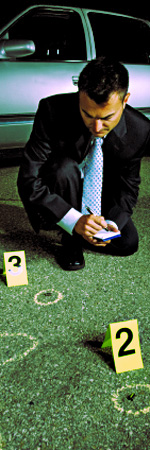
Probative Value and Prioritization
Law Enforcement Responsibilities at the Scene, cont.
To protect potential evidence, crime scene personnel must know how to properly collect DNA evidence, including touch DNA items. While most homicides and sexual assaults will be assigned to a detective, it is imperative that first responders know how to properly secure and document the scene to protect the integrity of the evidence collected and ensure admissibility of the evidence in court proceedings.
Responders should also consider the potential value of collecting elimination samples from victims, suspects and officers present at the crime scene. In some instances the responder may work with a Sexual Assault Response Team (SART)4. Organizations that have access to SARTs should ensure that the SART members receive appropriate training in evidence collection and prioritization. Well-run SARTs yield more evidence on average than cases in which no SART or Sexual Assault Nurse Examiner (SANE) intervention occurs.5
4 Visit the Office for Victims of Crime Sexual Assault Response Teams (SART) Toolkit »
5 Nugent-Borakove et al., Testing the Efficacy of SANE/SART Programs: Do They Make a Difference In Sexual Assault Arrest & Prosecution Outcomes? 2006 PDF download: 2.7MB • Visit the National Criminal Justice Reference System »


